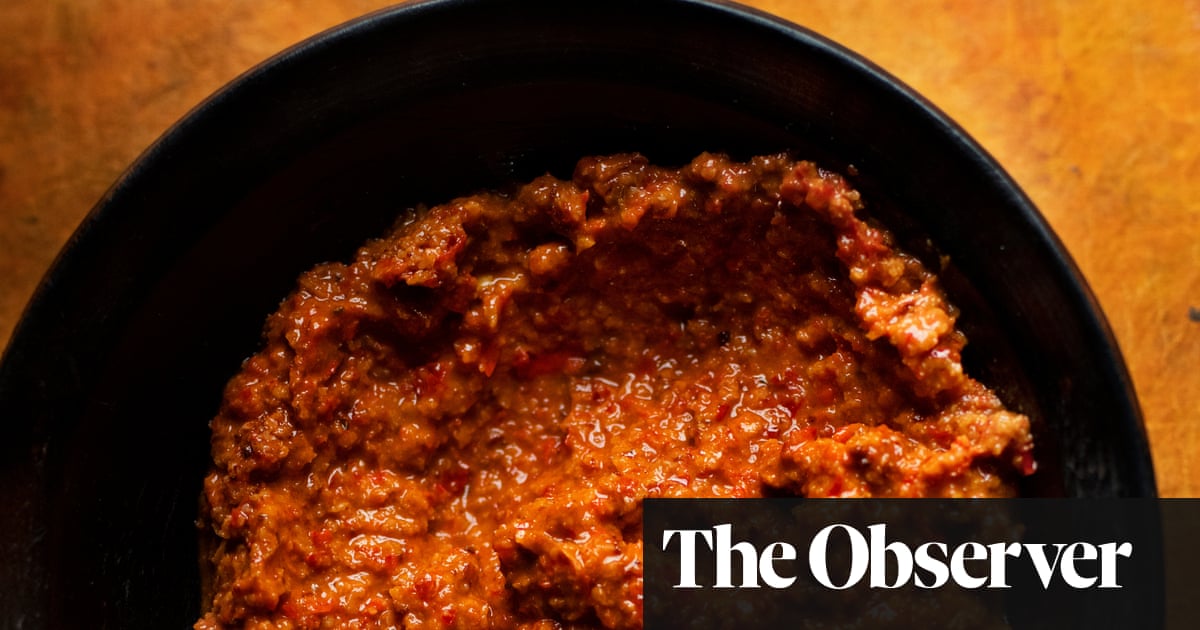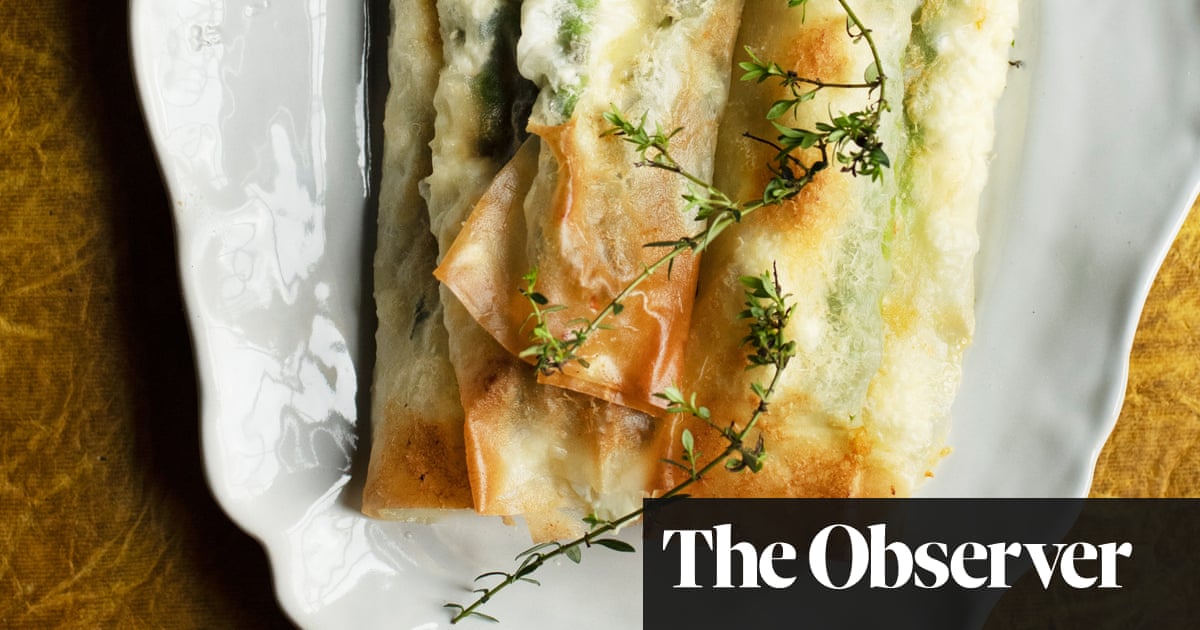
In the oven, the deep green leaves had crisped at the edges and peeled apart to reveal a cargo of baked white cheese and a smudge of rust-coloured spice paste. We scooped up the salty feta within and its hot harissa-style spread and mashed it on to bread torn from a crisp loaf. Tiny glasses of cold beer were more than welcome to quell the vibrant heat.
There is no real need to make your own spice pastes – the market is flooded with them. But sometimes a cook just wants to play. The spice cupboard is the biggest toybox of all and there is much fun to be had on a cold winter’s afternoon, grinding and pounding, mixing and toasting. I’m not sure there should be any rules, and if you wish to stick at the milder, gentler end of the spectrum, then you should stay with mixtures of coriander and cinnamon, aniseed and ginger, juniper and dried thyme.
On this occasion, I wanted heat. A pot of big, fiery notes to stir into a vegetable stew and to add fire to my bread and cheese lunch. So, the scarlet and rust spices it is, though mostly the dark red Aleppo pepper – for its smoky, fruity notes akin to sundried tomatoes – and some ground coriander for its citrus notes against the dark earthiness of cumin.
Add a clutch of long, fresh chillies to the mix and a few glugs of olive oil and we are talking about a paste akin to harissa, the deeply fragrant and moderately hot spice mix used, in one form or another, throughout the Middle East. A little pot of warmth for a chilly winter’s day.
A fiery red spice paste
A harissa-style paste for stirring into vegetable stews – it is wonderful with aubergines – and for adding fire to soups. The heat will depend on the variety of chillies you are using. I use large, medium-hot chillies for this, but others may prefer a smaller, spicier variety. I chop the chillies finely by hand and only then do I add them to the blender. This involves a few moments of extra work, but it seems to give a better texture to the paste than simply chucking everything at the blender.
caraway seeds 2 tsp
cumin seeds 1 tsp
coriander seeds 1 tbsp
red chillies 6, large and fresh
Aleppo pepper 2 tsp
salt 2 tsp
garlic 4 plump cloves
olive oil 100ml
lemon juice 1 tbsp
Put the caraway, cumin and coriander seeds into a dry, shallow pan, place over a low to moderate heat and toast the spices for a few minutes. Move the seeds around the pan every now and again, taking care they don’t scorch, then remove from the heat when they are toasty and fragrant. Using a spice mill or a pestle and mortar, reduce the spices to a fine powder and tip them into the jug of an electric blender.
Remove the stalks from the chillies, then chop them very finely. They should look like bright scarlet mince. Add them to the jar along with the Aleppo pepper and the salt.
Peel the garlic and pop the cloves into the blender jug, then process to a coarse paste. Pour in the olive oil and continue processing for a few seconds until you have a smoothish paste. (I think it is more interesting when it’s not completely smooth.)
Taste a little – it should be really quite hot. Now stir in enough of the lemon juice to add a fresh and slightly sour top note.
Baked feta in vine leaves
You can, of course, make this with shop-bought harissa. Preserved vine leaves are available in small packs in brine or in jars. They will keep well enough while sealed and kept cool. I find them useful for wrapping up baked meatballs (the leaves help to keep them juicy) and for wrapping pieces of white fish going into the oven. Serves 2
vine leaves 8, large, vacuum packed or bottled
feta cheese 2 x 200g blocks
thyme leaves 1 tbsp, chopped
spice paste 4 tbsp (the recipe above)
olive oil 4 tbsp
lemon 1
Preheat the oven to 200C/gas mark 6. Place a piece of foil or baking parchment on the bottom of a baking dish. It will make it easier to lift out the parcels.
Place 6 of the vine leaves flat on the baking paper, each slightly overlapping. Sit 1 of the blocks of feta in the middle, then sprinkle over the thyme leaves. No salt or pepper. Put 2 tbsp of the spice paste on top of the cheese, then fold the leaves over the top of the block and secure with a wooden skewer or a couple of cocktail sticks.
Repeat with the remaining leaves and the second block of cheese, thyme and spice paste, then secure the leaves and trickle both with the olive oil.
Bake the parcels for 20 minutes until the leaves have started to crisp and the cheese is hot, then open the leaves and let the top of the cheese feel the heat for 5 to 10 minutes. Squeeze the lemon over as you eat.












